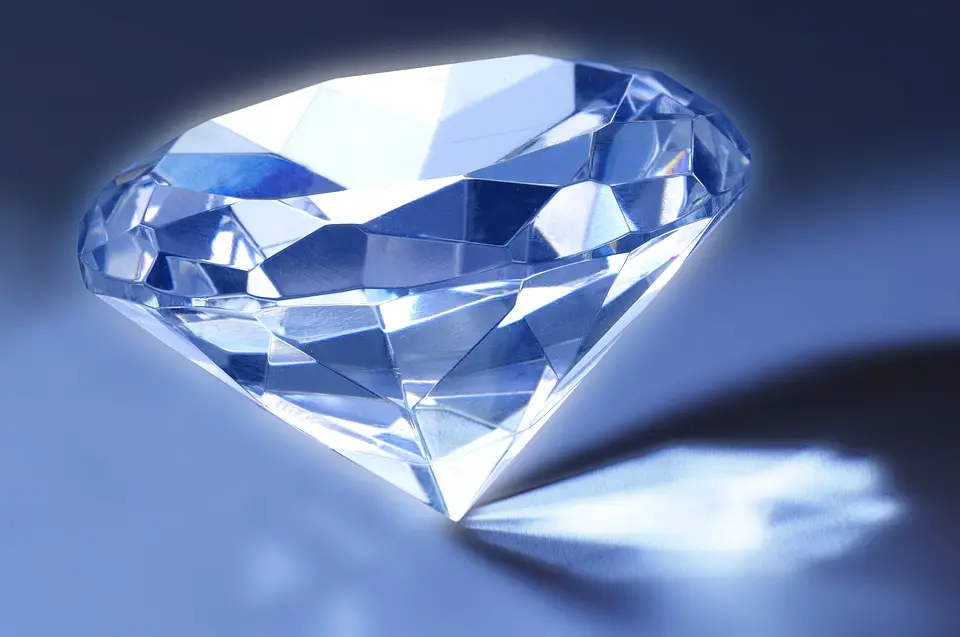What is a Diamond’s Cut Grade?
The diamond cut grade is a subjective measure of how good the diamond looks. It is not an objective measure of how good the diamond is. A diamond’s cut is the single biggest indicator of its sparkle.
Of the four c’s of diamonds, cut is the most misunderstood. This is because we typically refer to a diamond’s shape as its cut. For example, a round diamond is called a “brilliant cut”, while a rectangular diamond is said to be “emerald cut”. What cut truly refers to is how ideally the diamond is cut to bring out its natural brilliance.
See also: Diamond Shape vs Diamond Cut: What’s the Difference?
What is a Good Cut?
A good diamond cut grade is a diamond that has been cut to maximize the beauty of the stone, while minimizing its flaws. The determining factor in grading a diamond’s cut is how well it reflects the light shining on it. Cut grades are only used in reference to round (brilliant) and square (princess) diamonds.
A diamond that is ideally cut to the perfect proportions sparkles more than a diamond of an inferior cut. Cutting to the perfect proportion ensures that light entering the diamond is reflected back out through the top.
If a diamond’s cut is too shallow, light leaks out of the bottom.
If the cut is too deep, light escapes from the sides.
Cut Grades
Diamond cuts are graded to help you understand the quality of your diamond. The five diamond cut grades are:
- Ideal – This cut is the best quality diamond cut. It is rare, as only about three percent of the world’s diamonds are cut to this grade. This diamond reflects light extremely well.
- Very Good – This diamond is nearly as brilliant as an ideal cut, but will cost you a little less.
- Good Cut – Still in the top 25% of diamond cuts, this diamond will cost substantially less than the two higher cut grades, but still reflect most light that enters.
- Fair Cut – You’ll find many diamonds in this cut grade. It is a beautiful diamond, but noticeably less brilliant than higher cuts.
- Poor cut – These diamonds lose much of the light coming into them rather than reflecting it back. This diamond is a poor investment and most reputable jewelers will not carry this cut.
What Causes an Inferior Cut?
It might seem that inferior cut diamonds must have been cut by less talented cutters, but this is not the case. Diamonds are often cut to less than ideal proportions intentionally. This is usually done for one of two reasons:
- Weight – Many shoppers are primarily interested in buying a diamond of a large carat weight. A deeply cut diamond will have less brilliance, but more carat weight.
- Imperfections – If a diamond has a very noticeable imperfection, the diamond cutter may choose to cut the diamond in a way that avoids this imperfection, called an inclusion, from being obvious, at the sacrifice of the diamond’s brilliance.
How the Cut Affects Your Purchase
If you’re planning to purchase a round or square shaped diamond, pay attention to your diamond’s cut grade. It is important to buy the best overall diamond you can afford, but it is important to remember that the cut affects the diamond’s beauty more than any other element.
In fact, buying a smaller diamond in a better cut makes more sense than buying a larger diamond of an inferior cut. Here’s why:
- An ideally cut diamond is more beautiful and has more sparkle. It looks larger than a larger diamond with an inferior cut.
- Weight affects price more than cut, so a smaller diamond with an ideal cut costs less than a larger diamond with an inferior cut.
- An ideally cut diamond appears to have a brighter color
- An ideally cut diamond’s imperfections are less noticeable
The cut of your diamond is definitely one of its most important features. Choose a reputable jeweler who can help you find the perfect combination of all the “c’s” in your diamond.

